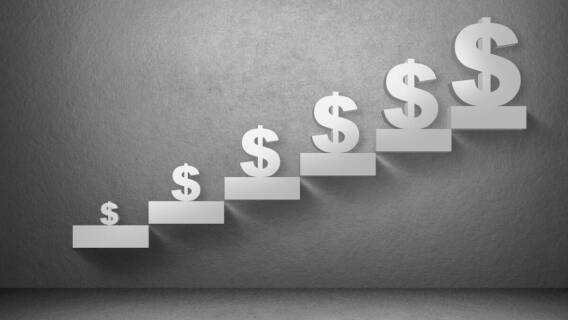A bond ladder is a series of bonds (or fixed-date bond funds) with staggered maturity dates that’s designed meet your fixed-income needs while reducing the risk of fluctuating interest rates.
Because bond prices and yields move inversely, in a period of rising rates, existing bonds lose market value as new issues offer higher yields.
In a period of falling rates, existing bonds (assuming the same quality and maturity) gain market value as they’re offering higher yields than what new issues will offer.
The risks, for bond investors, are that they may need to liquidate fixed-income holdings at below face value to raise capital or the yields on their bonds may be below prevailing rates.
One popular strategy to mitigate those risks is to build a bond ladder, where your fixed-income investments are spread across a range of maturity dates (for instance, instead of investing in only five-year bonds, you would make a series of smaller investments in three-, four- and five-year bonds).
Then, as each security matures, you reinvest the proceeds in a new security at the top of ladder, which becomes your new longest-dated security.
If interest rates are rising, the new investments will have higher coupon rates than the investments rolling off the bottom of the ladder, and your yield will gradually rise. If rates remain flat, the longer maturity at the top of the ladder typically commands higher rates in a normal interest rate environment. This is particularly valuable in uncertain markets as it allows you to avoid locking assets entirely in either low-yielding, short-term bonds or higher-yielding bonds that will decline in value if rates rise.
For example, if you wanted to create a bond ladder today, you could buy bonds maturing in 2027, 2028 and 2029. When your 2027 bond matures, you would invest the proceeds in a 2030 bond, which would typically offer higher rates than your shorter-term bonds given the longer time to maturity.
[text_ad]
While longer-term bonds yield more, shorter-duration fixed-income investments carry less interest rate risk. In other words, if you expect rates to begin heading higher (say if the Fed signals that rates will remain high longer than the market expects or inflation rears its ugly head again), you’ll want your longest-dated bond to still mature fairly soon (probably within five years) so you’re not stuck holding a bunch of low-yield fixed-income investments for a long time.
If your liquidity needs are not a concern and interest rates are holding steady, you can lengthen your ladder by incrementally buying later maturities (in the example above, using half of your proceeds to buy 2030 bonds and half to buy 2031 bonds). This requires a little more active management but does help ensure that you’ve locked in more money while rates are high.
In an interview we did with value investor and former longtime Cabot analyst J. Royden Ward, he described a bond ladder as such:
The most important part of creating a bond ladder that will preserve your capital is that you only buy individual bonds or defined-maturity bond funds.
Unlike standard bond funds, bond funds with maturity dates preserve the principal guarantee you get with individual bonds, or the promise that you’ll get your original investment back when the security matures. For most investors, BulletShares ETFs are the simplest way to construct a bond ladder.
The ETFs come in investment-grade, municipal and high-yield versions, with maturity dates from 2025 to 2033 (there are 2034 and 2035 funds for the investment-grade and municipal bond ETFs as well).
The BulletShares ETFs mature on either December 15 or the last trading day of the year in the name of the fund, at which time the NAV of the fund is distributed to shareholders.
Whichever funds you choose, when the first maturity in your ladder arrives, you can keep your bond ladder intact by reinvesting the redemption value into a new security at the top of the ladder. This will maintain your income stream—and if market rates begin rising, it will grow over time.
In the event you run into unexpected liquidity needs, the annual maturation of one-fifth (in a five-year ladder) of your bond holdings can help.
And, should rates fall, your portfolio holdings will grow in value because they’re paying above-market rates.
[author_ad]
*This post has been updated from a previously published version.

